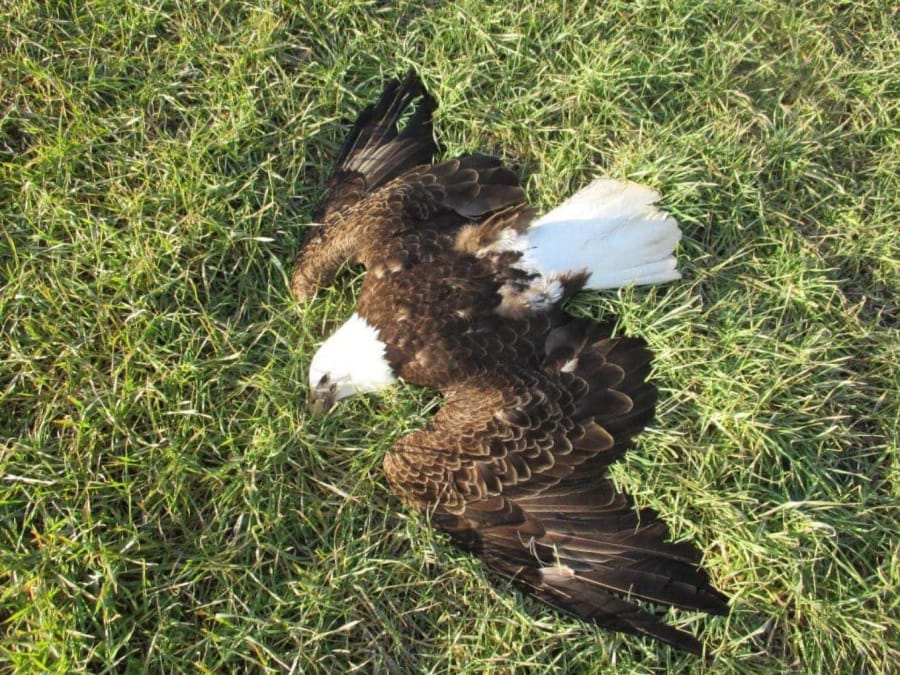The 13 bald eagles were found lifeless on a Maryland farm more than two years ago, many with wings splayed, bodies intact, and talons clenched. Several were too young to have their species’ distinctive white heads. And at least six, according to a federal lab report, had ingested a highly toxic pesticide that has been essentially banned from the U.S. market, in part because it is lethal to birds.
The report, which was obtained by the Annapolis, Md., radio station WNAV and shared with The Washington Post, answers one big question in a mysterious wildlife crime that angered conservation organizations and stumped U.S. Fish and Wildlife investigators, who were involved because the bald eagle is a federally protected species. Tests showed that the birds were poisoned, as officials suspected. What remains unsolved is who did it.
“There was no smoking gun,” said John LaCorte, a special agent for the U.S. Fish and Wildlife Service who spent six months interviewing more than a dozen landowners and property managers in the Eastern Shore area where the eagles died. “It’s very frustrating.”
The chemical that killed the birds, carbofuran, came under scrutiny three decades ago for killing what the Environmental Protection Agency estimated were as many as 2 million birds a year, threatening the bald eagle’s then-fragile road to recovery. The granular form, which a Fish and Wildlife official in 1987 told The Post was the primary cause of death for bald eagles in the Chesapeake Bay region, was banned in the mid-1990s. The EPA disallowed the use of liquid carbofuran on food crops in 2009, saying the residue posed an unacceptable safety risk. Environmental groups hailed the decision as a victory for human health and for wildlife.




